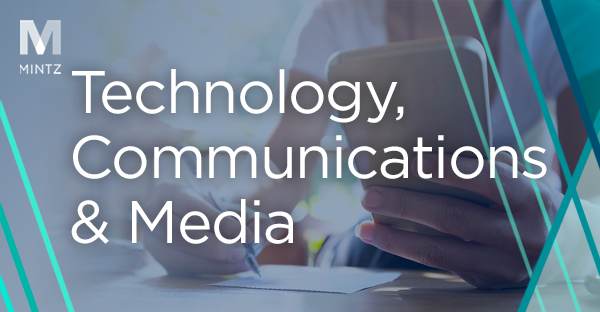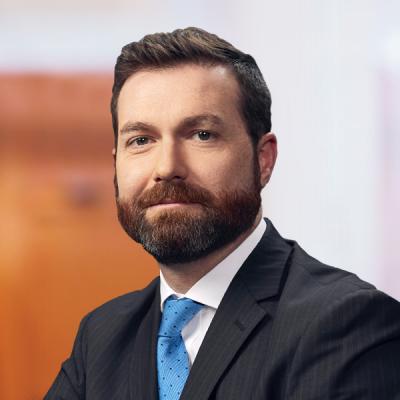What's New in 5G - April 2021
The next-generation of wireless technologies – known as 5G – is here. Not only is it expected to offer network speeds that are up to 100 times faster than 4G LTE and reduce latency to nearly zero, it will allow networks to handle 100 times the number of connected devices, revolutionizing business and consumer connectivity and enabling the “Internet of Things.” Leading policymakers – federal regulators and legislators – are making it a top priority to ensure that the wireless industry has the tools it needs to maintain U.S. leadership in commercial 5G deployments. This blog provides monthly updates on FCC actions and Congressional efforts to win the race to 5G.
Regulatory Actions and Initiatives
Mid-Band Spectrum
- The FCC takes additional action on Tribal entities’ requests to use spectrum in the 2.5 GHz band.
- The FCC released an Order on March 11, 2021, granting two requests for waiver filed by the Turtle Mountain Band of Chippewa Indians regarding the definition of eligible Tribal lands for purposes of applying for 2.5 GHz band spectrum in the Rural Tribal Priority Window. Grant of the waivers will allow the Tribe to obtain 2.5 GHz licenses for trust lands in Roulette County, North Dakota, that are largely adjacent to the Tribe’s reservation and non-reservation trust lands around Trenton, North Dakota.
- That same day, the FCC made publicly available a grant (from August 2020) of emergency special temporary authority to the Confederated Salish and Kootenai Tribes of the Flathead Nation to operate on unassigned 2.5 GHz spectrum during the COVID-19 pandemic.
- In addition, on March 30, 2021, the FCC released three Orders granting additional requests for waiver related to the definition of Tribal lands. Grant of the waiver request to the Passamaquoddy Tribe will allow it to obtain a 2.5 GHz license for approximately 94,000 acres of trust lands that fall outside of the Tribe’s Pleasant Point and Indian Township reservations. Grant of the waiver request to the Middletown Rancheria of Pomo Indians of California will allow it to obtain a license for several parcels of fee lands owned by the Tribe that are adjacent to and near its reservation in Northern California. And grant of the waiver request to the Squaxin Island Tribe will allow it to provide service for several parcels of trust land in the Mason County and Thurston County, Washington, region, some of which are immediately adjacent to the Tribe’s reservation.
- The FCC grants the first authorizations for mid-band spectrum to provide 5G services and prepares the band for commercial operations.
- On March 12, 2021, the FCC released a Public Notice announcing the grant of applications for licenses in the 3.5 GHz band. A subsequent Public Notice with additional grants was also released on March 26, 2021. The auction, the first of mid-band spectrum to support next-generation 5G services, concluded in September 2020 and has been touted by FCC Acting Chairwoman Rosenworcel as “demonstrat[ing] US leadership in spectrum innovation.”
- Relatedly, on March 9, 2021, the FCC released a Public Notice certifying Key Bridge as a Spectrum Access System for the 3.5 GHz band, which, among others, will coordinate use of the band. FCC Acting Chairwoman Rosenworcel applauded the certification and the progress made on the 3.5 GHz spectrum sharing regime, noting that “[i]t is exciting to see the rapid rise of the FCC’s Citizens Broadband Radio Service” and “[w]e are making history with this innovative band.”
- On March 29, 2021, the FCC issued a Public Notice seeking comment on a Request for Partial Waiver submitted by the National Football League regarding the use of Citizen Broadband Radio Service (“CBRS”) devices. The NFL seeks authority to operate General Authorized Access CBRS units without connecting to a Spectrum Access System, in the event the team loses an Internet connection. Comments are due April 8, 2021, and reply comments are due April 15, 2021.
- The FCC adopts rules that make spectrum in the 3.45-3.55 GHz band available for commercial services and seeks input on an auction of that spectrum.
- On March 17, 2021, the FCC adopted an Order that makes 100 megahertz of spectrum in the 3.45-3.55 GHz band available for full-power commercial wireless services across the contiguous United States, while also ensuring that existing federal users can have access to the spectrum on a protected basis where and when they need it. In contrast to the draft Order that was released, the final Order, among other things, adopts 10-megahertz blocks for the band to promote wider participation in the auction of the spectrum.
- On the same day, the FCC adopted a Public Notice that seeks comment on the procedures to be used for the auction of the 3.45-3.55 GHz band and proposes to commence bidding in early October 2021, consistent with its statutory objective to auction the spectrum by December 31, 2021. The Public Notice generally proposes auction procedures that are consistent with those that have been used in recent FCC spectrum auctions. Comments on the Public Notice are due April 14, 2021, and reply comments are due April 29, 2021.
High-Band Spectrum
- The FCC grants an extension for public input on reallocating spectrum in the 12 GHz band for commercial wireless use.
- On March 29, 2021, the FCC released an Order granting the Computer & Communications Industry Association, INCOMPAS, Open Technology Institute at New America, and Public Knowledge’s request for a 30-day extension of the comment deadlines for the Notice of Proposed Rulemaking, which seeks comment on adding a new or expanded terrestrial mobile allocation to the 12.2-12.7 GHz (the “12 GHz”) band. The band is currently used for Direct Broadcast Satellite service, Multi-Channel Video and Data Distribution Service, and Fixed Satellite Service (space-to-Earth) limited to non-geostationary orbit systems. Comments and reply comments are now due May 7, 2021 and June 7, 2021, respectively.
5G Networks and Infrastructure
- The FCC announces a list of equipment and services that pose a national security risk to U.S. communications networks and provides preliminary cost estimates for removal and replacement.
- The FCC released a Public Notice on March 12, 2021, announcing the publication of its “Covered List” of equipment and services that are deemed to pose an unacceptable risk to the national security of the United States. The list, which is attached as an appendix to the Public Notice and is available on the FCC’s website, includes certain equipment or services produced by the following entities, as well as their subsidiaries and affiliates: (1) Huawei Technologies Company, (2) ZTE Corporation, (3) Hytera Communications Corporation, (4) Hangzhou Hikvision Digital Technology Company, and (5) Dahua Technology Company. FCC Acting Chairwoman Rosenworcel explained that “[t]his list is a big step toward restoring trust in our communications networks” and “provides meaningful guidance that will ensure that as next-generation networks are built across the country, they do not repeat the mistakes of the past or use equipment or services that will pose a threat to U.S. national security or the security and safety of Americans.”
- On March 25, 2021, the FCC released a Public Notice seeking comment on a Supply Chain Reimbursement Program Study and a preliminary Catalog of Eligible Expenses and Estimated Costs that will inform the FCC’s reimbursement program for providers that are required to remove equipment and services that pose a national security risk from their networks. The Public Notice also seeks comment on a preliminary List of Categories of Suggested Replacement Equipment and Services to aid with the replacement of covered equipment and services. Comments on all three documents are due April 26, 2021.
- FCC Commissioner Carr recently called for further action to address the threats posed by China by closing a security loophole that allows insecure devices to continue to be used in U.S. networks. Specifically, the FCC’s rules prohibit companies from purchasing suspect equipment using federal funds, known as Universal Service Funds, but does not prohibit them from using private funds to purchase and use that exact same equipment. He also called for the FCC to take action to ensure that devices made with forced labor do not enter the U.S. market.
- The FCC solicits feedback on Open RAN networks.
- On March 17, 2021, the FCC adopted a Notice of Inquiry (“NOI”) that seeks input on the current status and deployment of Open Radio Access Networks (“Open RAN”), which some parties assert are a potential path to drive 5G innovation, and virtualized network environments, domestically and internationally. Comments on the NOI are due April 28, 2021, and reply comments are due May 28, 2021.
Other Spectrum and Infrastructure Matters
- FCC Commissioner Carr suggests a roadmap for extending U.S. leadership in 5G.
- At an event hosted by the American Enterprise Institute, FCC Commissioner Carr announced his 5G agenda, including plans on spectrum and infrastructure reforms. According to an FCC News Release issued on March 15, 2021, that plan includes auctions of spectrum in the 3.45 GHz and 2.5 GHz bands in 2021, allowing low-power operations in the 6 GHz band, and seeking comment on increasing the power levels for the 3.5 GHz band (see above). It also aims to auction additional spectrum in 2022 and beyond in the 1300-1350 MHz, 42 GHz, and lower 3 GHz, 4.8 GHz, and 7 GHz bands.
- With respect to infrastructure, the plan aims to produce updated broadband maps this year (the FCC recently announced broadband data will be collected directly from consumers), commence an auction of 5G Fund support next year, act on pending infrastructure reforms to drive down the costs of reaching rural areas, and expand tower crews needed to complete 5G builds through Commissioner Carr’s 5G jobs initiative, among other things.
In the Courts
- T-Mobile West LLC v. City and County of San Francisco
- On March 18, 2021, the federal District Court for the Northern District of California granted T-Mobile a significant victory over the City and County of San Francisco in T-Mobile’s challenge to the City’s failure to timely act on T-Mobile’s site modification applications under Section 6409 of the Spectrum Act, 47 U.S.C. § 1455(a) and the FCC’s Rules. T-Mobile filed the action after the City failed to act on multiple T-Mobile applications to modify existing wireless sites within the 60 days required by FCC rules, and T-Mobile notified the City that a series of applications were deemed granted under the FCC rules. Then, as allowed by the FCC’s rules, T-Mobile filed in federal court asking the Court to issue a declaratory judgment that the deemed granted notices were enforceable, and also asking the Court to order the City to issue permits to formalize the legal status of the applications. T-Mobile moved for a preliminary injunction and summary judgment.
- The City opposed T-Mobile’s action, arguing that the Tenth Amendment prohibited Congress and the Court from ordering the City to take any action.
- In its Order, the Court grants T-Mobile summary judgment on its Section 6409 claim, recognizing that T-Mobile’s applications were “Eligibly Facilities Requests” that do not substantially change the physical dimensions of the existing site, and therefore, under Section 6409, the City cannot deny the applications. In doing so, the Court also recognizes that the City failed to timely act on the applications that T-Mobile deemed granted.
- Based on the Court’s holding that the City violated Section 6409(a), the Court holds that the applications deemed granted by T-Mobile “are and shall be treated as legal by [the City].” (Emphasis added). This is strong language that is broad in scope.
- The Court rejects the City’s sole defense that Section 6409 violates the Tenth Amendment to the U.S. Constitution.
- The Court also grants in part T-Mobile’s motion for injunctive relief. In doing so, the Court recognizes that in the FCC’s 2014 Order implementing Section 6409, the FCC held that Section 6409 applicants could seek injunctive relief and that injunctive relief would be appropriate “in many cases in light of the balance of equities, including the public interest reflected in the statute of promoting rapid but responsible wireless facility deployment.”
- This was an important holding by the Court, as the City argued strenuously that Section 6409 did not allow any relief beyond the deemed granted notice. The Court concluded that T-Mobile demonstrated that it would suffer irreparable harm if the City acted to prevent T-Mobile from making installations or modifications pursuant to the deemed granted applications.
- The Court orders that (1) the deemed granted applications are “as effective as granted applications” as a matter of law, and (2) that the City is “estopped from imposing penalties in any way or preventing T-Mobile from proceeding with installations for T-Mobile’s deemed granted applications.” Although T-Mobile framed its motion as being for preliminary injunction, the Court’s remedy does not say it is not limited in time to the duration of this case.
- The Court’s conclusions are strong and positive for T-Mobile and other entities relying on Section 6409 to deploy upgrades or collocations of new facilities.
- City of Portland v. U.S.
- As anticipated, on March 22, 2021, the local governments that appealed the FCC’s 2018 “Small Cell Order” and “Moratorium Order” filed a Petition for Certiorari, asking the Supreme Court to review the Ninth Circuit’s decision in City of Portland v. U.S., 969 F.3d 1020 (9th Cir. 2020).
- As we previously reported, in City of Portland, the Ninth Circuit affirmed the FCC’s orders, rejecting the local governments’ various arguments challenging the FCC’s clarifications of the “effective prohibition” language of Sections 253(a) and 332(c)(7)(B)(i)(II) of the Communications Act.
- The Petition for Certiorari was docketed by the Supreme Court on March 25, 2021. Oppositions are due April 26, 2021.
- As anticipated, on March 22, 2021, the local governments that appealed the FCC’s 2018 “Small Cell Order” and “Moratorium Order” filed a Petition for Certiorari, asking the Supreme Court to review the Ninth Circuit’s decision in City of Portland v. U.S., 969 F.3d 1020 (9th Cir. 2020).
- Appeal of the 5G Upgrade Order – League of California Cities v. FCC
- On March 16, 2021, the FCC filed a motion asking the Ninth Circuit to hold in abeyance for 120 days the pending appeal of the FCC’s June 2020 Order clarifying the FCC’s rules implementing Section 6409(a) of the Spectrum Act (the so-called “5G Upgrade Order”). The FCC told the Court that holding the case in abeyance for 120 days would allow the “newly constituted Commission an opportunity to determine how it plans to proceed with respect to this case.” The request was unopposed.
- The Court granted the motion on March 19, 2021, vacating the prior briefing schedule and holding the case in abeyance until July 19, 2021.
Legislative Efforts
- A bill was reintroduced in the Senate that would require NTIA to estimate the value of spectrum allocated for federal use.
- On March 3, 2021, Senator Lee introduced the Government Spectrum Valuation Act. If enacted, the bill would require NTIA to estimate the economic value of spectrum between 225 MHz and 95 GHz that is allocated to federal entities. Similar bills were introduced in both the Senate and House during the 116th Congress.
- On March 3, 2021, Senator Lee introduced the Government Spectrum Valuation Act. If enacted, the bill would require NTIA to estimate the economic value of spectrum between 225 MHz and 95 GHz that is allocated to federal entities. Similar bills were introduced in both the Senate and House during the 116th Congress.
- A bill was introduced in the Senate that would establish a C-band auction reserve fund, which would be used to promote broadband connectivity.
- On March 4, 2021, Senator Wicker introduced the Broadband Reserve Fund Act of 2021, which would require net proceeds from the recently concluded C-band auction to be deposited in a reserve fund at the Department of Treasury. The FCC or NTIA would be able to use the funds to, among other things, expand broadband access in unserved areas and minority communities, improve communications infrastructure, and secure the telecommunications supply chain.
- On March 4, 2021, Senator Wicker introduced the Broadband Reserve Fund Act of 2021, which would require net proceeds from the recently concluded C-band auction to be deposited in a reserve fund at the Department of Treasury. The FCC or NTIA would be able to use the funds to, among other things, expand broadband access in unserved areas and minority communities, improve communications infrastructure, and secure the telecommunications supply chain.
- A bill was introduced in the Senate that would create a grant program to expand the 5G workforce.
- On March 25, 2021, Senator Wicker introduced the Improving Minority Participation and Careers in Telecommunications (IMPACT) Act. If enacted, the bill would establish a grant program that awards $100 million in grants to historically Black colleges or universities (“HBCUs”), Tribal colleges or universities (“TCUs”), or minority-serving institutions for the development of telecommunications workforce training programs. It would also require NTIA, by December 31, 2022, to award at least 30 percent of funds to HBCUs and at least 30 percent of funds to TCUs. FCC Commissioner Carr stated that the bill “would help create thousands of good-paying jobs while closing the digital divide and advancing our 5G leadership.”

What's New in 5G - March 2021
March 2, 2021| Blog

What's New in 5G - February 2021
February 2, 2021| Blog






